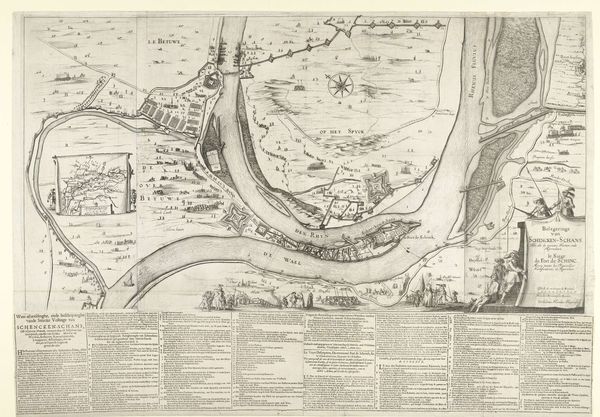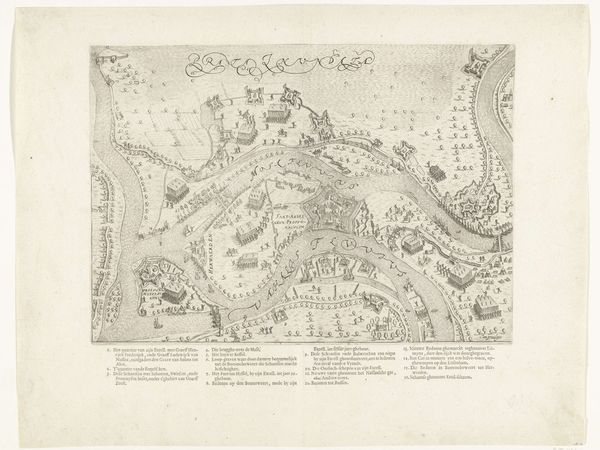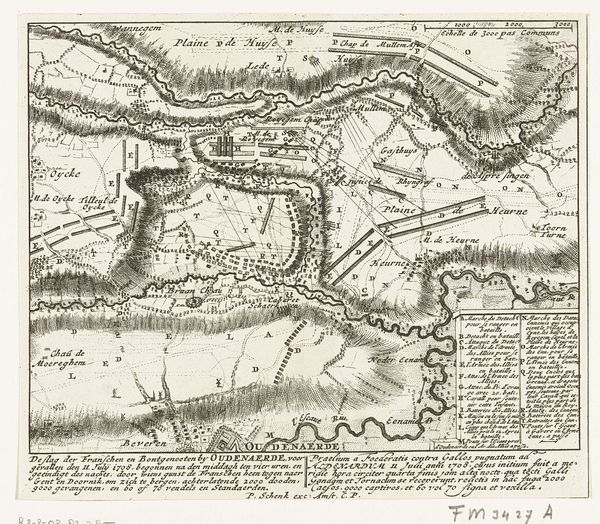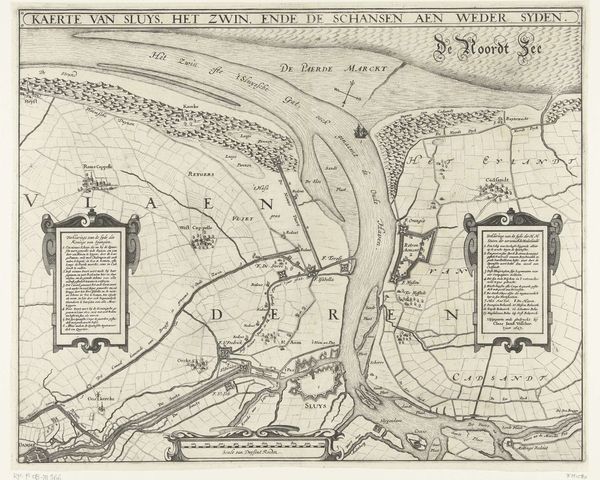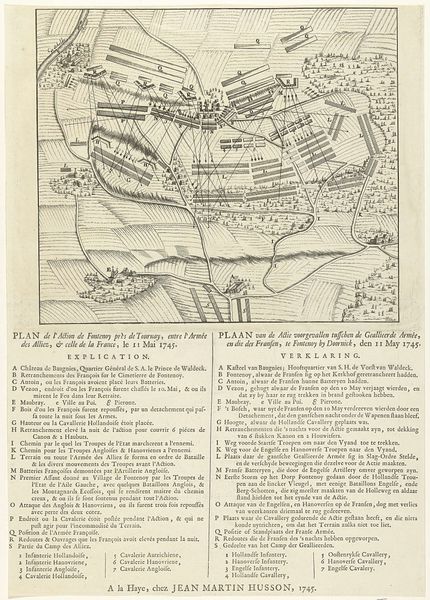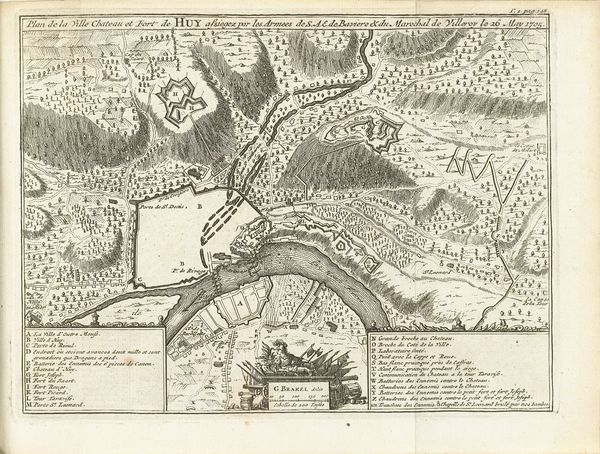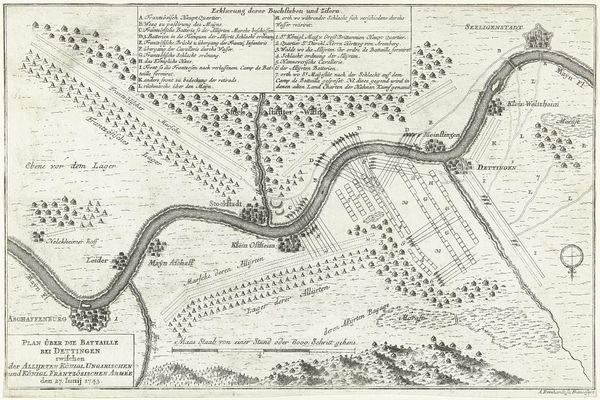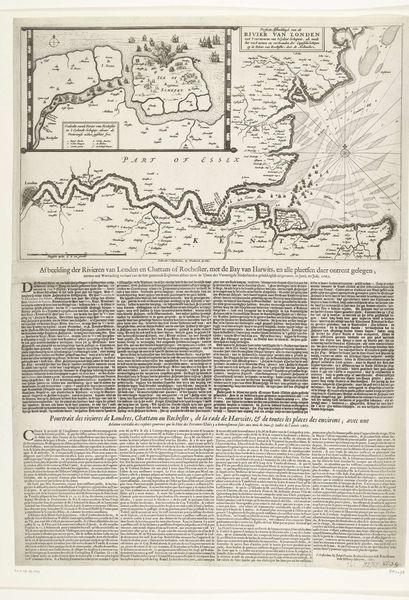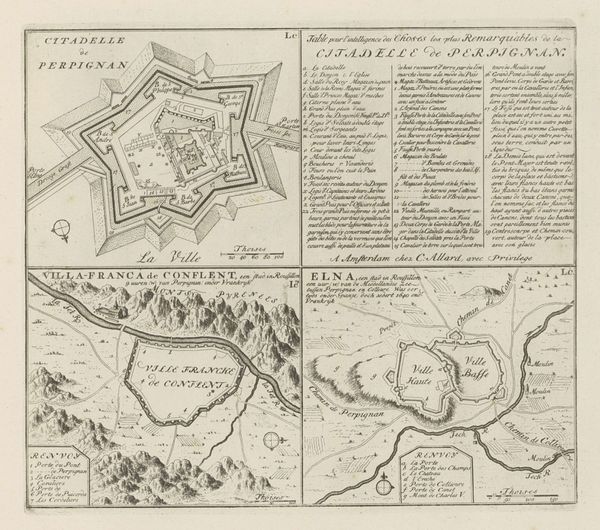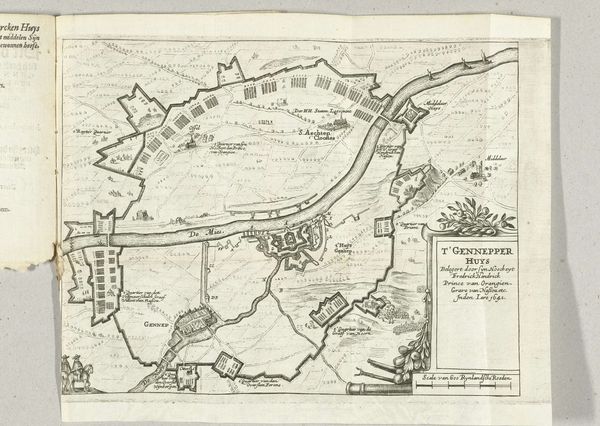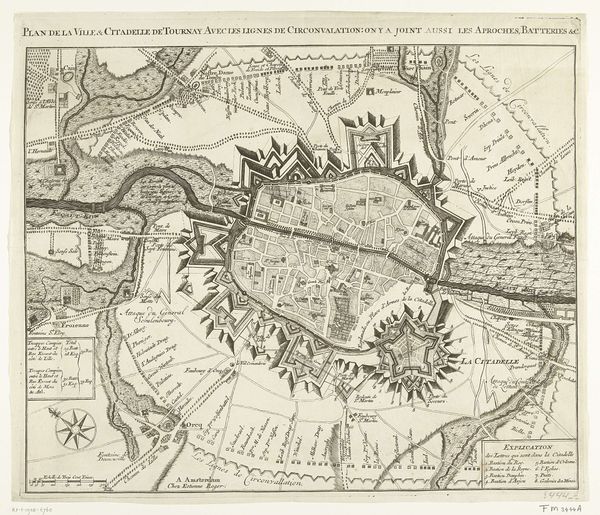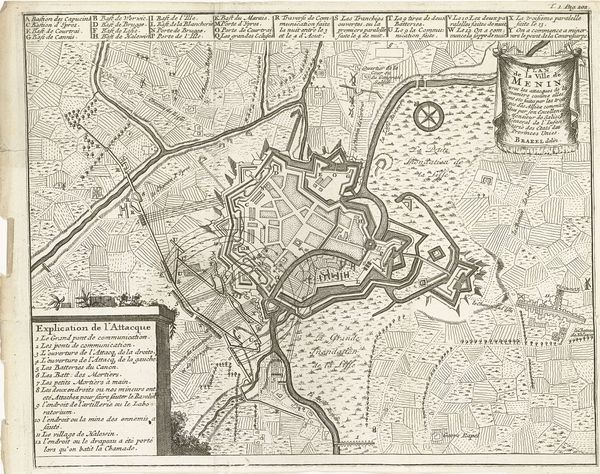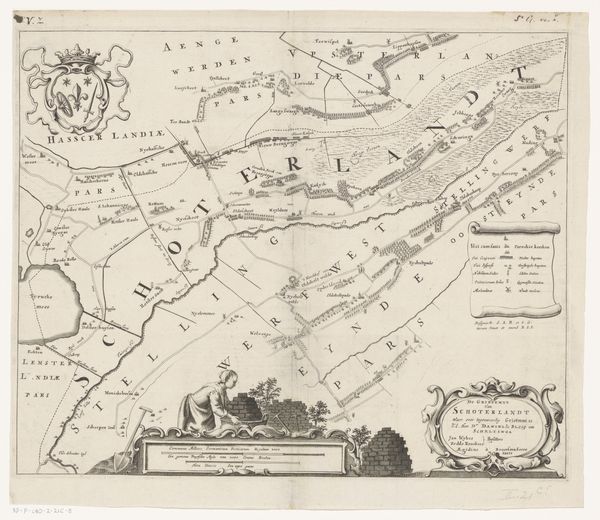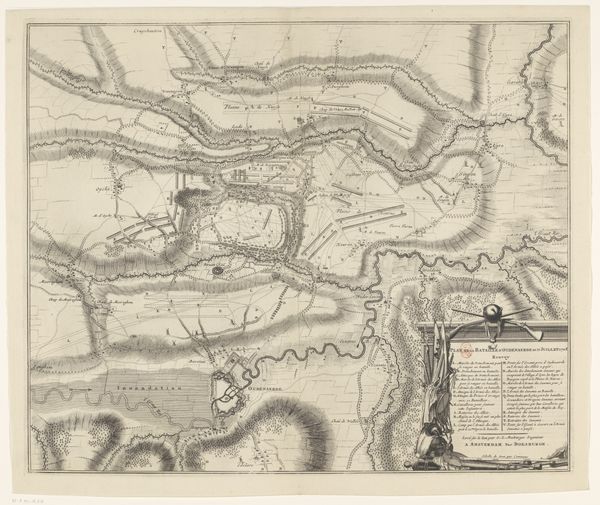
print, engraving
#
baroque
# print
#
old engraving style
#
geometric
#
pen work
#
history-painting
#
engraving
Dimensions: height 385 mm, width 391 mm
Copyright: Rijks Museum: Open Domain
Curator: Let's turn our attention to this quite intricate print entitled "Plan van de slag bij Dettingen, 1743", made in 1743 by P.A. de Saint Hilaire Mallet. It depicts a detailed map of the Battle of Dettingen. Editor: Immediately, I'm struck by the graphic intensity. The density of lines almost overwhelms the eye, creating this really energetic sense of military activity despite being just a static object. Curator: Yes, the engraving technique certainly contributes to that feeling. Notice how the engraver uses different densities of lines to indicate the deployment of troops, fortifications, and geographical features. We also see elements typical of baroque styles within historical painting. Editor: Right, but consider the labor involved. Each line is a physical act, repeated thousands of times. How many hands would this piece have passed through to become a means of recording and, frankly, celebrating colonial ambitions? It also strikes me as so intentionally diagrammatic, the act of inscription itself became almost violent, mirroring the violence that the artwork represents. Curator: That’s a powerful point. And one can definitely analyze this from a structural perspective. See how the composition uses the river as a central dividing line, separating the Allied and French forces. It’s almost like a stage for a deadly ballet, each element carefully positioned for maximum impact. It presents history with a calculated perspective. Editor: Precisely. Even the materials are significant; paper becoming a site for mapping strategies of violence, metal for inscribing colonial fantasies. How different is it from textiles and rugs representing abstract geometric war plans? Curator: By engaging with these contexts of making and reception, you’re challenging the traditional high/low art boundaries and allowing for interpretations around the history depicted that may be unseen initially. Editor: Indeed. I see beyond neat geometric order in a singular framed artefact that reproduces a bloody battle on a sheet. Curator: A vital dimension. Thinking about visual language and its material underpinnings lets us truly appreciate its full historical and cultural resonance.
Comments
No comments
Be the first to comment and join the conversation on the ultimate creative platform.
